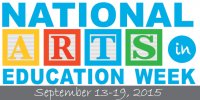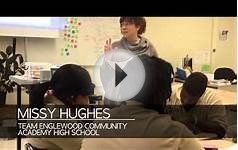 In July of 2010, the U.S. House of Representatives passed designating the second week of September as National Arts in Education Week. The resolution expressed congressional support for arts education:
In July of 2010, the U.S. House of Representatives passed designating the second week of September as National Arts in Education Week. The resolution expressed congressional support for arts education:
Whereas arts education, comprising a rich array of disciplines including dance, music, theatre, media arts, literature, design, and visual arts, is a core academic subject and an essential element of a complete and balanced education for all students.
Sandra Ruppert – Director, Arts Education Partnership
Forty-nine states and district of Columbia have adopted standards for what students should know and be able to do in the arts. In addition, 45 states require, by law, that elementary schools in their state provide arts instruction. And 27 states define the arts in statute or code as a core or academic subject. Given these facts, then, why do so many education leaders and school officials still treat the arts as extracurricular, extraneous or expendable when making school staffing and funding decisions? How do we explain the “policy paradox” of strong policies for the arts in education at the state level but weak implementation of those same policies at the school level? Let’s see more stories where the commitment from the state house to the school house has produced a coordinated strategy and decisive actions to ensure that all students receive a complete and balanced education that includes the arts as an essential component.
Given these facts, then, why do so many education leaders and school officials still treat the arts as extracurricular, extraneous or expendable when making school staffing and funding decisions? How do we explain the “policy paradox” of strong policies for the arts in education at the state level but weak implementation of those same policies at the school level? Let’s see more stories where the commitment from the state house to the school house has produced a coordinated strategy and decisive actions to ensure that all students receive a complete and balanced education that includes the arts as an essential component.
Jane Chu – Chairman, National Endowment for the Arts
If we want to get serious about closing the achievement gap, then we need to get serious about the arts. This is a matter of urgency, especially given recent news that 51 percent of U.S. public school students now live in poverty. Arts education is vital to the future of our young people and our country, giving children from every background new opportunities for growth. The arts are not a frill. When school districts cut arts education from the budget they’re cutting short their students’ potential for academic and social success, as well as solving old problems in new ways.









 Chelsea College of Art and Design, the erstwhile Chelsea School of Art, is a constituent college of the University of the Arts London, and is a leading British art and design institution with an international reputation. It offers further and higher education...
Chelsea College of Art and Design, the erstwhile Chelsea School of Art, is a constituent college of the University of the Arts London, and is a leading British art and design institution with an international reputation. It offers further and higher education...